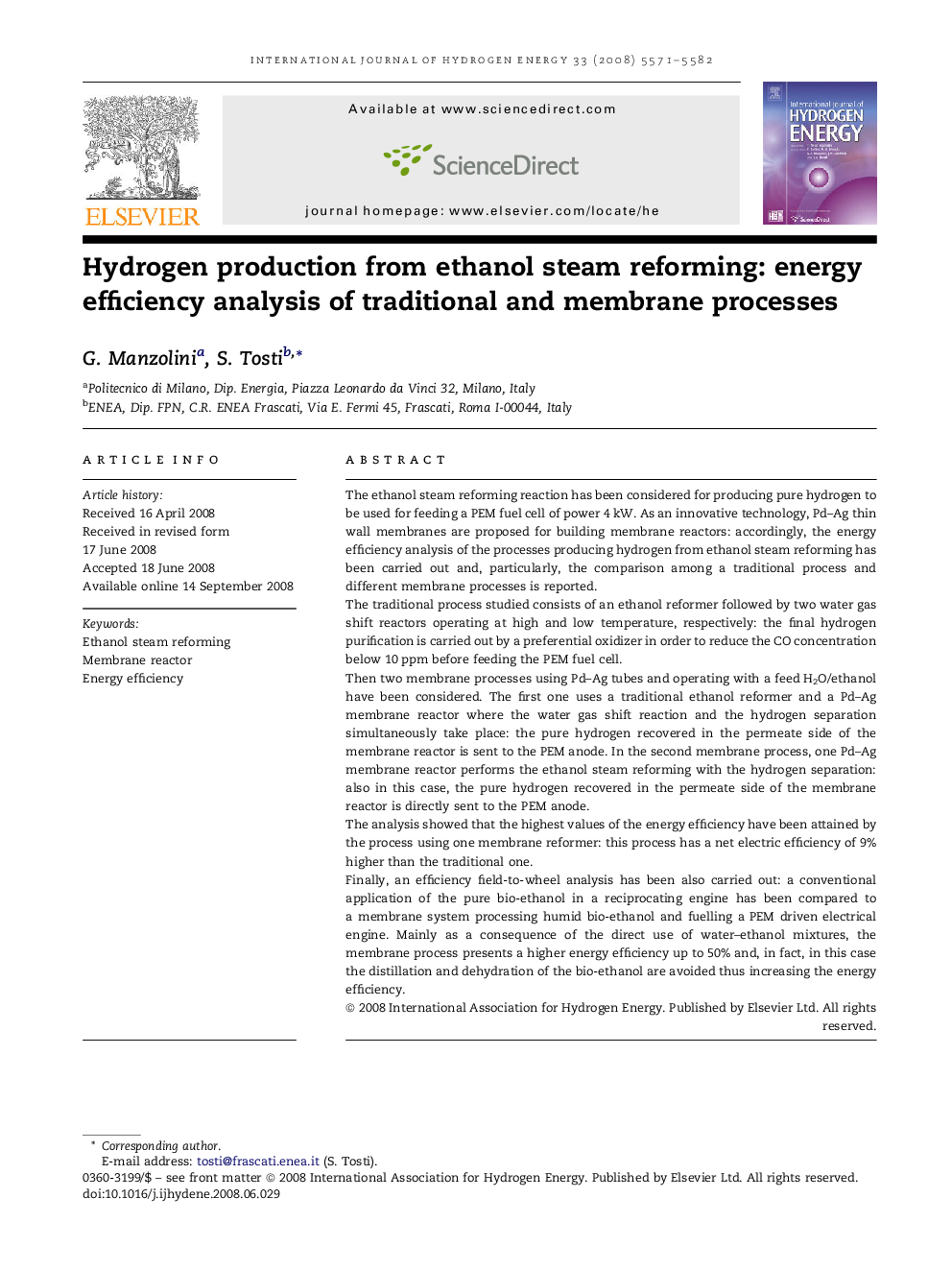| کد مقاله | کد نشریه | سال انتشار | مقاله انگلیسی | نسخه تمام متن |
|---|---|---|---|---|
| 1278494 | 1497646 | 2008 | 12 صفحه PDF | دانلود رایگان |

The ethanol steam reforming reaction has been considered for producing pure hydrogen to be used for feeding a PEM fuel cell of power 4 kW. As an innovative technology, Pd–Ag thin wall membranes are proposed for building membrane reactors: accordingly, the energy efficiency analysis of the processes producing hydrogen from ethanol steam reforming has been carried out and, particularly, the comparison among a traditional process and different membrane processes is reported.The traditional process studied consists of an ethanol reformer followed by two water gas shift reactors operating at high and low temperature, respectively: the final hydrogen purification is carried out by a preferential oxidizer in order to reduce the CO concentration below 10 ppm before feeding the PEM fuel cell.Then two membrane processes using Pd–Ag tubes and operating with a feed H2O/ethanol have been considered. The first one uses a traditional ethanol reformer and a Pd–Ag membrane reactor where the water gas shift reaction and the hydrogen separation simultaneously take place: the pure hydrogen recovered in the permeate side of the membrane reactor is sent to the PEM anode. In the second membrane process, one Pd–Ag membrane reactor performs the ethanol steam reforming with the hydrogen separation: also in this case, the pure hydrogen recovered in the permeate side of the membrane reactor is directly sent to the PEM anode.The analysis showed that the highest values of the energy efficiency have been attained by the process using one membrane reformer: this process has a net electric efficiency of 9% higher than the traditional one.Finally, an efficiency field-to-wheel analysis has been also carried out: a conventional application of the pure bio-ethanol in a reciprocating engine has been compared to a membrane system processing humid bio-ethanol and fuelling a PEM driven electrical engine. Mainly as a consequence of the direct use of water–ethanol mixtures, the membrane process presents a higher energy efficiency up to 50% and, in fact, in this case the distillation and dehydration of the bio-ethanol are avoided thus increasing the energy efficiency.
Journal: International Journal of Hydrogen Energy - Volume 33, Issue 20, October 2008, Pages 5571–5582